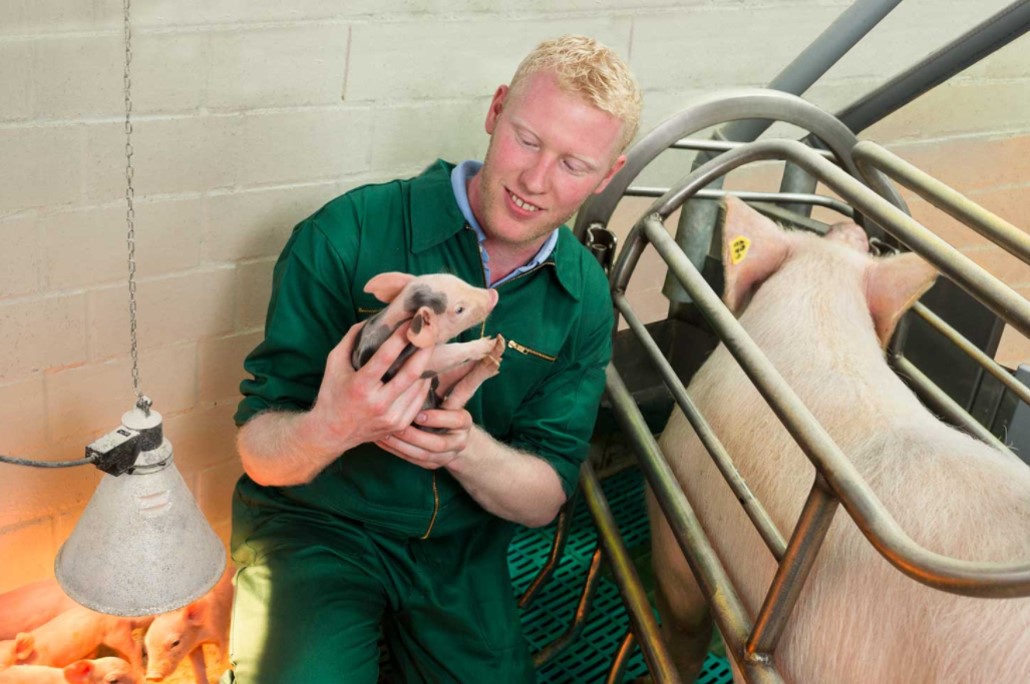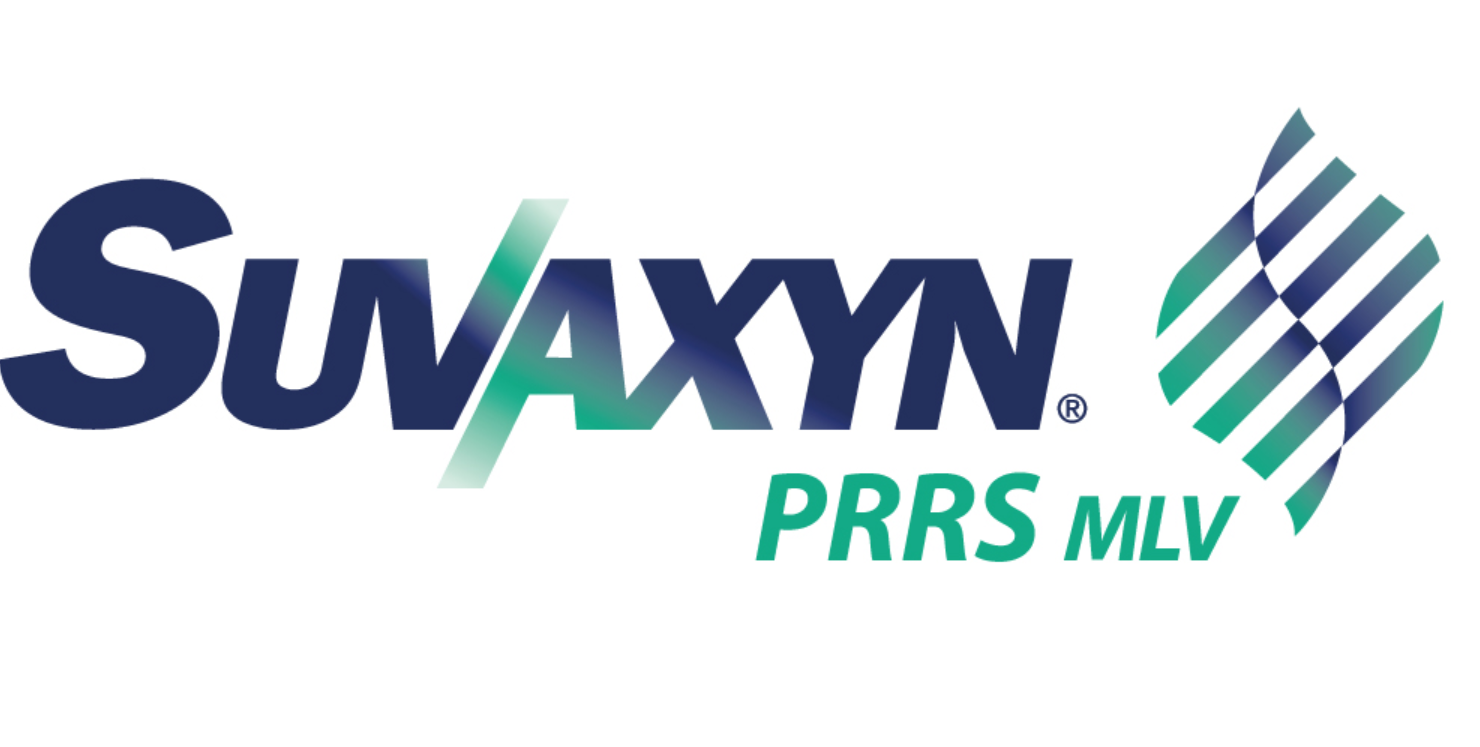



Early PRRS vaccination helps protect pigs through slaughter
A new, single-dose vaccine for porcine reproductive and respiratory syndrome (PRRS) has been shown to protect pigs from before weaning to slaughter, helping prevent secondary infections and performance losses associated with the costly disease.The modified-live virus (MLV) vaccine, which is registered for use in the EU countries, is based on a European PRRS virus strain (PRRSV-1, previously Genotype 1). Causing a host of reproductive issues in sows — including low birth rates, decreased milk yields and increased abortions and stillbirths — the virus is also associated with illness and increased mortality in young pigs, as well as respiratory problems, secondary infections and reduced performance in growers and finishers.[1]
To protect herds from PRRS, producers have traditionally vaccinated pigs around 3 to 4 weeks of age, when maternal antibodies are typically low enough not to interfere with the vaccine’s ability to trigger the desired immune response. However, recent studies show that the new MLV vaccine can overcome maternal immunity when given at 1 day of age, providing earlier immune protection that lasts until slaughter.[2]

PRRS game-changer
Presenting the work at the 2018 European Symposium for Porcine Health Management (ESPHM) in Barcelona, Spain, researcher Monica Balasch, DVM — who is also associate director of global biologicals research at Zoetis — said the ability to administer the vaccine from day 1 is a game-changer in the PRRS protection paradigm.
“Being able to vaccinate from day 1 helps bridge the gap in protection between the loss of maternal immunity at 3 to 4 weeks of age and the onset of active immunity, which typically develops about 3 to 4 weeks after the vaccine is given,” she explained.
“The vaccine used in this study demonstrated a significant protective effect when administered as early as day 1, indicating that it was not affected by maternally derived immunity. By having immunity in place by the time pigs are weaned, producers can better protect against early PRRS infection and common, secondary bacterial infections, as well as the considerable economic costs associated with them.”
Overcoming maternal antibodies

Vaccination demonstrated a protective effect by significantly reducing viral load in serum compared to control (3.5 log reduction). Significant reductions in nasal and oral shedding (2.0 and 1.0 log reduction) and rectal temperatures further supported efficacy. Researchers also recorded a notable difference in mean percentage of lung lesions (4.3% versus 1.3%).
Protected to slaughter
According to Balasch, the MLV vaccine used in this study is currently the only one authorised for use from day 1 in Europe, owing to its proven safety and efficacy in very young piglets.[3] However, she added, earlier protection does not have to mean leaving pigs vulnerable later in life, when they are at peak economic value.
In another Zoetis study presented at 2018 ESPHM, a single dose of the same MLV vaccine administered at 1 day of age was shown to confer a duration of immunity of 26 weeks, ensuring protection all the way to slaughter.[4]
In this study, researchers divided 38 1-day-old piglets, born from PRRSV seronegative sows, into two groups. One group (20 pigs) was kept as negative control, and the other group (18 pigs) was vaccinated at 1 day of age via intramuscular injection. Twenty-six weeks after vaccination, researchers intranasally challenged all pigs with a heterologous European PRRSV-1 subtype 1 strain and recorded viral load in serum, rectal temperatures, oral and nasal shedding, clinical signs and body weight. Nine to 10 days after challenge, investigators necropsied the pigs and examined their lungs for macroscopic lesions.
Results showed that the vaccine continued to have a protective effect 26 weeks after administration, as demonstrated by significant reductions of viral load in serum (3.8 log reduction) and nasal shedding (1.0 log reduction), as well as in mean percentage of lung macroscopic lesions (3.7% versus 1.0%).
“These findings confirm that a single, intramuscular administration of the vaccine from 1 day of age is sufficient to protect pigs through slaughter,” Balasch said. “The ability to protect pigs against PRRS very early in life to slaughter with a single injection, combined with the vaccine’s proven safety and cross-protective efficacy following a heterologous PRRSV-1 challenge, represent important advantages in PRRS management.”
References:
1. Zoetis Launches Suvaxyn® PRRS MLV in the European Union, Jan 16, 2018
2. Fort M et al. “Vaccination of 1-day-old pigs with a Porcine Reproductive and Respiratory Syndrome Virus (PRRSV) modified live attenuated vaccine is able to overcome maternal immunity.” ESPHM 2018 Abstract Book.
3. https://pighealthtoday.com/modified-live-vaccines-by-far-most-effective-tool-for-combatting-prrsv/
4. Fort M et al. “Vaccination of 1-day-old pigs with a PRRSV modified live attenuated vaccine confers protection until slaughter.” ESPHM 2018 Abstract Book.









